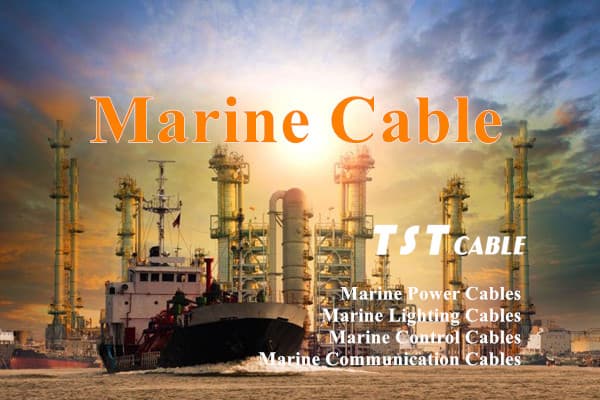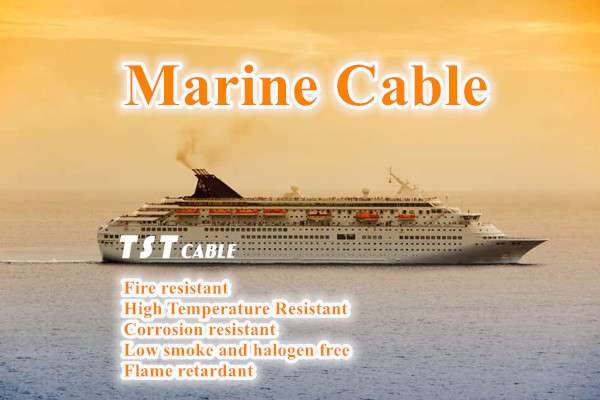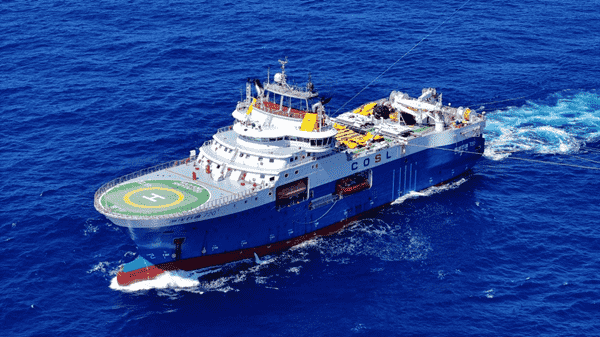
Marine cable, also known as marine cable, is a kind of wire and cable designed for power, lighting, control, communication and other systems of ships, offshore oil platforms and buildings on water.
Due to the special characteristics of the ship environment, such as high humidity, salt spray corrosion, vibration, etc., marine cables need to be highly corrosion-resistant, vibration-resistant, oil-resistant and waterproof. In addition, ship cables have to meet the requirements of relevant international and domestic standards and codes to ensure the safe operation of ships.
I. Application of marine cables:
- Power system: Marine cables are used to connect various power equipments such as engines, diesel engines, ship generators, and their control, protection and monitoring systems. These cables are responsible for transmitting electrical energy to ensure the normal operation of the power system.
- Safety equipment system: In the ship safety equipment system, marine cables are used to connect fire alarm system, gas detection and alarm equipment, fire fighting equipment, life-saving equipment and so on. These cables play a vital role in emergencies, and can quickly transmit signals and start the corresponding safety equipment.
- Lighting system: Marine cables are also used to supply power to various lighting equipment, such as lamps in the cabin and on the deck, navigation lights, signaling lights and so on. These cables ensure the normal navigation of the ship at night or in bad weather conditions.
- Communication and control system: Communication cables in ships are responsible for transmitting telephone, data and monitoring signals to ensure smooth communication within the ship and between the ship and land. Meanwhile, control cables are used to transmit control signals to realize precise control of various equipments on the ship.
- Environmental monitoring system: The environmental monitoring system of modern ships includes the monitoring and control of environmental parameters such as temperature, humidity, smoke and oxygen content. The application of marine cable in the environmental monitoring system is very important, with the role of transmitting environmental signals, driving environmental measurement equipment.
Second, the characteristics of marine cable
Due to the specificity of its use of the environment, marine cables need to meet a series of strict requirements:
- Safe and reliable: marine cables must have a high degree of safety and reliability to ensure the normal operation of the ship in a variety of harsh environments.
Temperature resistance, fire resistance, flame retardant: marine cables need to have excellent temperature resistance, fire resistance and flame retardant properties to prevent fire and other accidents. - Oil, moisture and seawater resistance: Since ships are often exposed to humidity, salt spray and other harsh environments, marine cables must be oil, moisture and seawater resistant.
- Excellent electrical and mechanical properties: Marine cables need to have excellent electrical and mechanical properties to ensure stable signal transmission and long-term use of the cable.
- Flexibility, bending and stretching resistance: for occasions that require frequent cable retractions and releases, such as ports and terminals, it is necessary to use marine cables with special structures and materials to meet the requirements of frequent bending and stretching.

Third, 11 common types of marine cable
- RVVP type cable: shielded multi-stranded flexible cable, commonly used to connect control equipment and systems.
- RVS type cable: shielded multi-stranded flexible cable, usually used for lighting and power equipment.
- RVB type cable: non-shielded multi-stranded flexible cable, commonly used in low-voltage power equipment.
- RVK type cable: oil, water and corrosion resistant control cable.
- JIS type cables: marine cables conforming to Japanese industrial standards.
- NEK606 type cables: marine cables in accordance with Norwegian cable standards.
- Power cables: transmit high voltage and high current, commonly used copper or aluminum core, insulation commonly used cross-linked polyethylene or ethylene propylene rubber.
- Rubber jacketed cables: such as TQ, YQ, YZ type, suitable for different voltages and installation conditions of electrical equipment and power tools.
- Waterproof cables: such as ZR-YJV22, ZR-YJV62, ZR-PV type, suitable for power, lighting and communication equipment inside ships and offshore oilfield platforms respectively.
- Flame retardant cables: such as NH-YJV22, NH-YJV62, NH-KVV22 type, used in occasions where flame retardant performance is required.
- Low smoke and halogen free cables: such as WDZ-GYJV22, WDZ-GYJV62 type, which are used in places where there are strict requirements on smoke and halogen emission.
Above the world’s leading marine cable manufacturer TST CABLES summarized marine cable applications, marine cable classification and marine cable selection knowledge, such as your business needs according to different use scenarios and demand for customized design and production of marine cables, a first-hand manufacturers, high-quality assurance, after-sales service without worry, welcome to contact us by mail.
Also available in:
English





